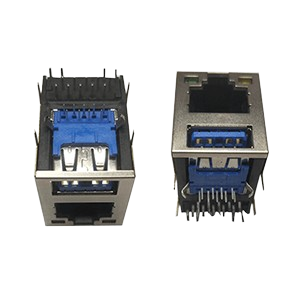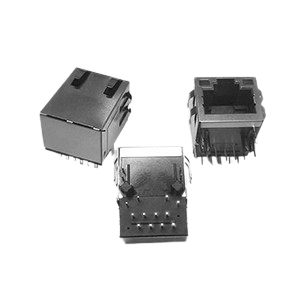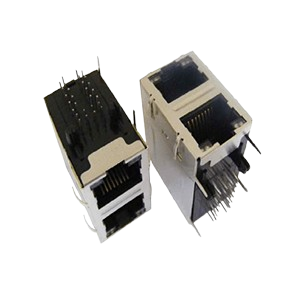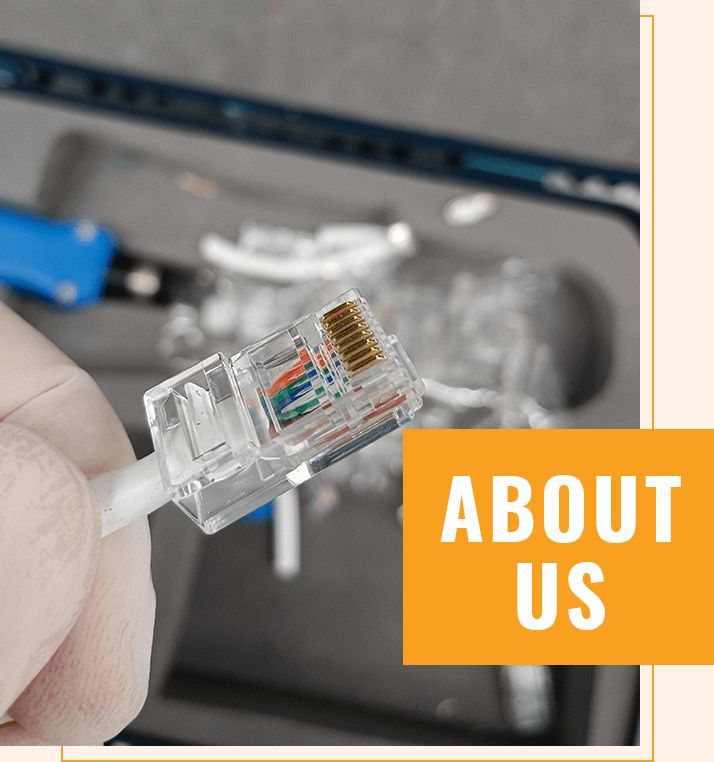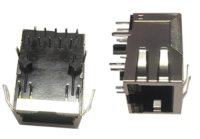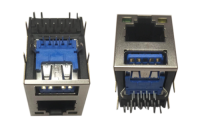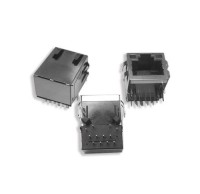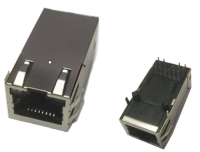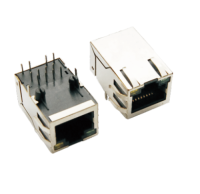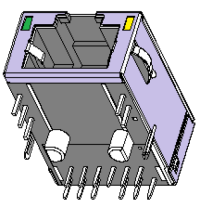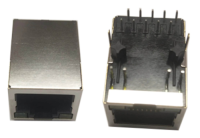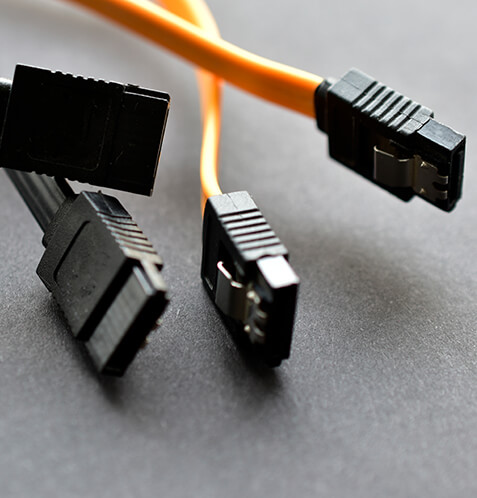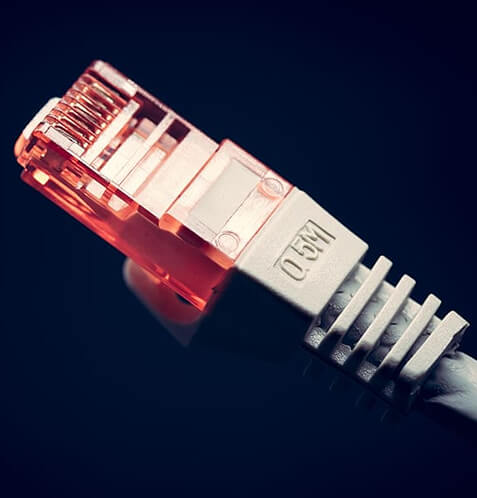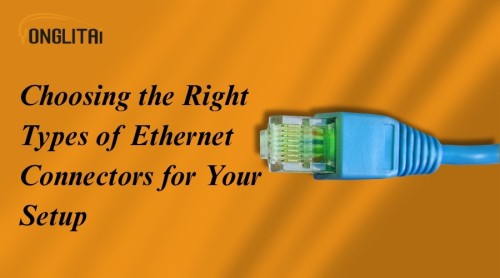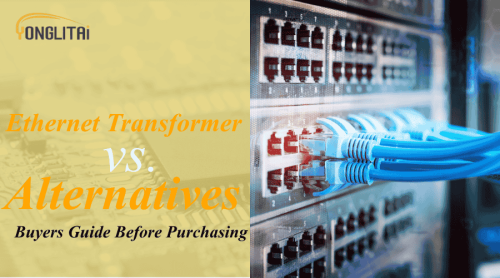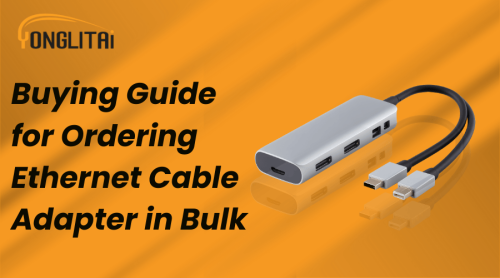 Admin
Admin
A stable wired internet connection is the foundation of productivity within families, workplaces, and organizations. Although wireless connections are convenient, a wired connection is generally considered the most reliable in terms of speed and stability. These connections will require Ethernet connectors to connect the connected devices to the network infrastructure. Ethernet connectors are available in various types and are used in different networking setups. The perfect connector used in a house cannot be the same as what works best in a full-time data center. Such differences are understood to prevent connection issues and avoid financial losses from purchasing inappropriate equipment. This blog discusses selecting the correct connector type based on specific networking requirements to achieve optimal performance and value. What is Ethernet Connector? An Ethernet connector is a physical connector that allows devices to access network cables. These are small yet important parts that form the connection points between computers, routers, switches, and other networking devices. Data will not pass through the network infrastructure without the needed connectors. The Ethernet connector is not an Ethernet cable. Data signals are transmitted through the cable, and the connector interferes with the cable and device interface. Consider cables to be roads and the ones that connect them to buildings to be bridges. A successful network between the two parties requires collaboration between them. These connectors are essential network equipment. The performance of the network is directly related to the quality and type of connector. Bad connectors result in loss of signal, slow connectivity, and poor connection. Selecting the correct connector ensures effective data transmission. Choosing the Correct Ethernet Connector Impact: The choice of Ethernet connectors can make a great difference in the speed and stability of the network. Bad connectors form bottlenecks and slow down the electrical connection on a fast network. They can also induce random disconnection, causing work and communication interruptions. Compatibility: Compatibility with devices is essential in selecting connectors. In routers, switches, and servers today, a specific type of connector is required. Combining incompatible connectors can prevent devices from connecting, and the lack of compatibility can reduce their performance capacity. Cost-effective: There is no need to spend money buying fancy connectors only to use them at home. Nonetheless, poor decisions regarding connectors result in frequent replacements and network downtime in business setups that require robust and reliable connectors. The Best Ethernet connector for setup to use is the one that suits the performance requirements and budget. Overview of the Main Types of Ethernet Connectors RJ45 Connectors RJ45 connectors are the most common type of connector used in networking. These are eight-pin modular connectors that accept Cat5, Cat6, and Cat7 cables. RJ45 connectors are standard connections that are used by nearly all home and office networks. RJ45 is widely used, and therefore, replacement parts are readily available. RJ45 ports are highly common on most network devices. This standardization is a straightforward way to set up and troubleshoot networks in homes and offices. RJ11 Connectors RJ11 connectors are generally used in telephone and DSL connections. These smaller connectors have just six positions, compared to the eight positions of an RJ45. The different physical size between RJ45 and RJ11 distinguishes them easily. RJ11 is incapable of supporting the data rate of RJ45. Computer networking using RJ11 is characterized by poor performance. These connectors are very convenient for their intended purposes in telephone and DSL applications, but are not suited for modern Ethernet networks. Shielded vs. Unshielded Connector STP (Shielded twisted pair) connectors are connected with metallic shielding that inhibits electromagnetic interference. UTP (Unshielded Twisted Pair) connector does not have this protective layer. The shielding is more expensive, but it gives significant advantages in some settings. Incidentally, industrial heavy machinery produces very high electromagnetic interference. Shielded connectors are beneficial in medical facilities and manufacturing plants, as they prevent signal distortion and interference. Shielding is required on rare occasions in the home environment, and unshielded connectors are more affordable in such settings. GG45 and TERA Connectors More advanced versions of Cat7 and Cat8 cables are the GG45 connector and the TERA connector. These are specialized connections that support higher frequencies and increased data transmission rates. These advanced options are commonly found with data center Ethernet connector types. Connectors in high-speed data centers must be capable of handling massive data volumes. GG45 and TERA connectors can provide these challenging needs. However, they are specialized and therefore have limited availability and are more expensive compared to typical RJ45 connectors. Fiber Optic Connector (LC, SC, ST) Fiber optic will remove copper wire restrictions on Ethernet. LC, SC, and ST connectors are used to join fiber optic cables to network equipment. These connectors make ultra-fast operational speeds over long distances. Fiber optic connections are advantageous for high-speed, long-distance networking. Fiber is in use on university campuses, in large corporate buildings, and in the telecommunications infrastructure. The technology is more expensive than copper, but it provides incomparable performance in high-pressure applications. Primary considerations when choosing Ethernet Connector Device compatibility: The compatibility of devices is the primary factor regarding connector selection. Always verify device requirements before buying connectors to ensure proper fit and function. Cable category support: The support of cable categories identifies which connectors can be used with the available cables. Cat5e cables need compatible connectors; higher-category cables have specific requirements. Misaligned connectors and cables prevent networks from performing at their optimal speed. Requirement of speed and bandwidth: The speed and bandwidth needs differ across setups. Home networks can require 1 Gbps capacity. The normal capacity of small businesses is 10 Gbps. Large businesses and data centers may need speeds of 40 Gbps or higher. A faster type of network requires high-speed Ethernet connectors. Environment: Connector choice is sensitive to environmental effects. Home networks are situated in well-ventilated and cool rooms. There is a moderate environmental challenge in office buildings. Data centers require connectors that can withstand round-the-clock heavy usage. An industrial environment easily requires rugged connectors that are resistant to harsh environments. Budget and durability: Durability and budget must be well-balanced. Premium connectors are more expensive, but they last longer when they are used frequently. Budget connectors are also good for small home use. Do not merely consider the initial or upfront cost, but also examine the total cost over time. Working Scenarios: Which Connector Should You Have? Home setups: Home networks are compatible with RJ45 unshielded connectors. With these, there is sufficient performance for streaming, browsing, and gaming. Cat5e or Cat6 cables with simple RJ45 connectors are suitable for most home networking needs without incurring excessive expenditure. Small office: The office settings with few people often require RJ45 Cat6 or Cat6a connectors. The shielded one will assist when the office is faced with numerous devices that interfere with the wireless systems. This is a modest price increase on more reliable connectors. An Ethernet connector for business networks must be a balance between performance and cost. Enterprise networks and data centers: TERA, GG45, or fiber optic connectors are required in data centers and enterprise networks. These sophisticated services handle the large volumes of data processed by such establishments. The nature of business operations and performance requirements justifies the increased costs. Industrial setups: The industry layouts require the use of shielded connectors, which are consistent even in extreme circumstances. Unshielded connections are disrupted by the electromagnetic radiation emitted by machines and tools. Costly network downtime is avoided by the investment in appropriate industrial-grade connectors. Avoiding Mistakes • The biggest mistake is mixing up RJ11 with RJ45. The resemblances of names trick people into believing that these connectors are interchangeable. Before purchasing any connector type, ensure that it is compatible. • Any negligence in shielding may result in network problems in high-interference surroundings. Shielded connectors are more expensive, but the price is justified in case the operations are interrupted by interference. Weigh the pros and cons of the environment and then make decisions regarding unshielded options. • There is no use in wasting money by overpaying for those connectors that were not needed at home. It means that high-end capabilities are usually advertised in marketing materials, which are not used in home networks. Only purchase match connector products according to their actual requirements, not the most expensive ones. • Non-compatibility of connectors with cable category is a performance bottleneck. Installing Cat5e connectors with Cat7 cables does not enable the network to operate at faster rates. Ensure that connector ratings are at least as significant as the cable ratings. Conclusion The network performance and reliability directly depend on the appropriate selection of the Ethernet connector. The range of connector types offered has a variety of engineering needs and applications. Knowledge of these differences can help to design optimal network system configurations. Making sure that the correct connectors are used based on the setup needs can minimize money waste and performance issues. A home network does not require the same type of solution as a data center or industry building. Better results are achieved by spending time to assess needs before purchasing connectors. Use suppliers and manufacturers as a reference when determining the most suitable Ethernet connectors for specific networking requirements. The proper advice of a professional can overcome the technical specifications; the selection should be correct. Dependable network performance relies on high-quality connectors supplied by trustworthy sources.
 Oct 09 2025
Read More
Oct 09 2025
Read More




